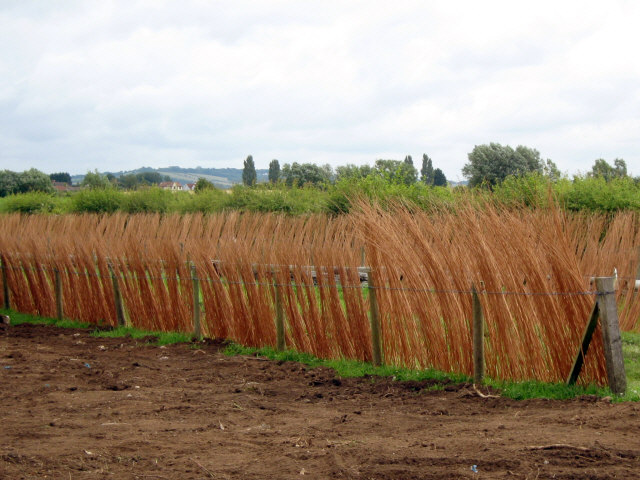Willow
Willows (Salix spp.), well known for their flexible and vigorous growth, have long been popular in basket and furniture making. A versatile woody plant, various species can also be used for trellises, fencing, floral arrangements, and artistic sculptures. Its fast growth makes willow a popular landscape ornamental, as well as a potential bioenergy crop. This profile will emphasize the production of willows for live cuttings and dried rods.
Marketing
Willow cuttings may be marketed as dried rods for basketry, furniture, and similar uses. Live stems for the floral industry are sold most often when dormant and less frequently when in full-leaf. Willows are also sold as live cuttings for nurseries and landscapes. Depending on the product, marketing possibilities include the Internet, direct sales to craftsmen, craft fairs, farmers markets, floral designers, garden centers, and nurseries. Currently there are very few commercial basketry willow growers in the U.S. Much of the willow used for this purpose is imported, generally from the British Isles. Willow was grown commercially by now-retired owners of a Kentucky willow farm, and they were unable to keep up with the increasing demand for domestically grown willow.
Production
 Willows thrive in deep, rich soil where there is plenty of water. However, willow is a hardy plant and also tolerates relatively poor soils and windy sites. While a high water table is advantageous, it is not absolutely necessary. The planting site should be well-tilled and free of weeds and large stones. There are numerous species and hundreds of cultivars that can be grown, depending on the desired use and characteristics preferred by the buyer. Planting material consists of fresh, 10- to 12-inch cuttings taken from 1-year-old willow shoots during dormancy. The cuttings are planted while still dormant (November through March) by inserting them directly into the soil by hand until 80 to 90 percent of the stem is buried.
Willows thrive in deep, rich soil where there is plenty of water. However, willow is a hardy plant and also tolerates relatively poor soils and windy sites. While a high water table is advantageous, it is not absolutely necessary. The planting site should be well-tilled and free of weeds and large stones. There are numerous species and hundreds of cultivars that can be grown, depending on the desired use and characteristics preferred by the buyer. Planting material consists of fresh, 10- to 12-inch cuttings taken from 1-year-old willow shoots during dormancy. The cuttings are planted while still dormant (November through March) by inserting them directly into the soil by hand until 80 to 90 percent of the stem is buried.

